Jewish holiday celebrated with bamboo
The Jewish holiday of Sukkot - which gets its name from the pluralization of the word Sukkah, meaning "booth" or "tabernacle" - recently came to an end after its annual eight-day celebration.
Every year, Jews around the world build a small walled structure out of wood, steel, plants and other materials to commemorate the dwellings their ancient ancestors lived in during their 40-year sojourn in the desert after the exodus from Egypt. This year, one community in Wesleyan, Ohio, observed the holiday by building their Sukkah out of material rarely associated with Jewish culture or arid habitats: bamboo.
Wesleyan University finds novel way to celebrate holiday
This year, Sukkot ran from Sept. 18-26, and about a week prior, members of Ohio-Wesleyan University's Physical Plant staff spent several days assembling a large Sukkah made completely out of bamboo and steel rods on the lawn of the campus' Olin Library.
The Sukkah is meant to be a gathering spot, and the holiday a happy, celebratory one. On the Wesleyan campus, the bamboo Sukkot served both of those purposes, bringing students of all denominations together to study, socialize and relax.
Other Jewish communities use bamboo in their Sukkot
Wesleyan was far from the only Jewish community that incorporated bamboo in its Sukkah. From Washington, D.C., to Omaha, Neb., to California's Inland Empire region, Sukkot were being built with bamboo rods, echoing the way that bamboo has caught on in modern and architecture and design around the world.
Not that long ago, many Jews made their Sukkot using simple, easy-to-find materials, like lumber, metal and even tarp. But as people have gained greater awareness and interest in using environmentally friendly, sustainable substances in buildings of all kinds, bamboo has become a popular option during the holiday.
Thanks to bamboo, the Sukkah erected at Georgetown University in Washington, D.C., looked more like a piece of contemporary art than the makeshift structures that were common not that long ago. And in Omaha, families slept in their Sukkot, looking up at the stars through bamboo rods. Using bamboo also helped Orthodox Jews in California build a traveling Sukkah that they could bring to families who didn't have the means or ability to build their own.
While products like commercial bamboo flooring, bamboo plywood and bamboo panels may be the most common, year-round products that employ the material, Sukkot showed it is something that has all manner of applications.







